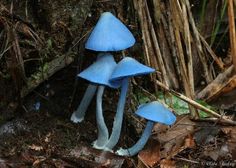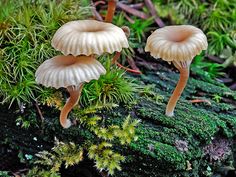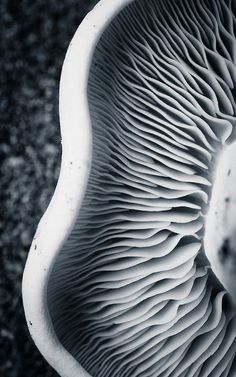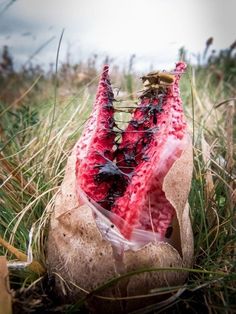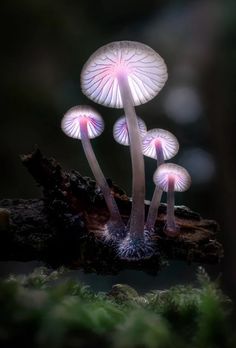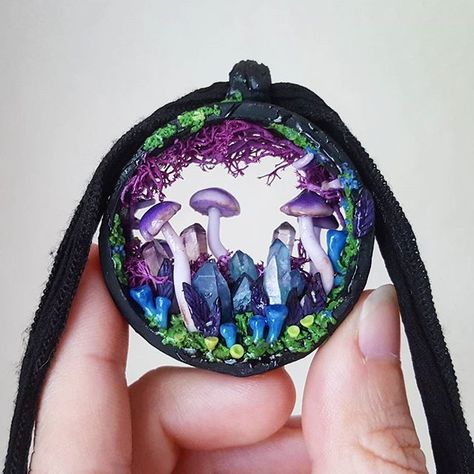definition - Leratiomyces_ceres
of Wikipedia
Advertizing ▼
Wikipedia
Leratiomyces ceres
From Wikipedia
Jump to:,
| Leratiomyces ceres | |
|---|---|
| Scientific classification | |
| Kingdom: | Fungi |
| Division: | Basidiomycota |
| Class: | Agaricomycetes |
| Order: | Agaricales |
| Family: | Strophariaceae |
| Genus: | Leratiomyces |
| Species: | L. ceres |
| Binomial name | |
| Leratiomyces ceres(Cooke & Masee) Spooner & Bridge | |
| Synonyms | |
|
Agaricus squamosus f. aurantiacusHypholoma aurantiacaHypholoma aurantiacumNaematoloma aurantiacaNaematoloma aurantiacumPsilocybe aurantiacaPsilocybe ceresStropharia aurantiacaStropharia percevalii var. aurantiacaStropharia squamosa var. aurantiacaStropholoma aurantiacum |
| Leratiomyces ceres | |
|---|---|
|
Mycological characteristics |
|
| gills on hymenium | |
| cap is convex | |
| hymenium is adnate | |
| stipe has a ring | |
| spore print is brown | |
| ecology is saprotrophic | |
| edibility: poisonous |
Leratiomyces ceres, commonly known as the Redlead roundhead, is mushroom which has a bright red to orange cap and dark purple-brown spore deposit. It is usually found growing gregariously on wood chips and is one of the most common and most distinctive mushrooms found in that habitat. It is also known as Stropharia aurantiaca, Hypholoma aurantiaca, Naematoloma aurantiaca, and a number of other synonyms. It is common in wood chips and lawns in North America, Europe, Australia, New Zealand and elsewhere.
Description
- Cap: 2 to 6 cm in diameter, with thin flesh and a bright red to brick red top which is convex to plane in age. Has partial veil remnants when young. The cap surface is usually dry, but can be slightly viscid when moist.
- Gills: Close, white to pale gray at first, later darker purple / brown or purplish gray with whitish edges. Attached (adnexed to adnate) and often notched.
- Spores: Dark purple / brown. 10-13.5 x 6-8.5 m. Elliptical and smooth.
- Stipe: Whitish, often with dark orange stains in age (most evident around base), 4-8 cm long, .5 to 1cm wide, equal to slightly larger at the base, which often has pale yellowish mycelium attached. The veil is thin and leaves a fragile ring, sometimes not present with age. The stalk is smooth above the ring and has tiny scales below, which often wash off in rain.
- Taste: Mild
- Odor: Mild
- Edibility: Poisonous
References
- ↑ Bridge PD, Spooner BM, Beever RE, Park DC. (2008). Taxonomy of the fungus commonly known as Stropharia aurantiaca, with new combinations in Leratiomyces. Mycotaxon 103:109–121.
- Arora D. 1986. Mushrooms Demystified: A Comprehensive Guide to the Fleshy Fungi (2nd edition). Berkeley: Ten Speed Press. ISBN 0898151694.
Ceres exploration
The idea that an undiscovered planet could exist between the orbits of Mars and Jupiter was first proposed by Johann Elert Bode in 1772 on the basis of the Titius-Bode rule, about the regularities in the radii of the orbits of the planets known at that time.
The search for a planet at a distance of 2.8 astronomical units from the Sun led to the creation in 1800 of a group of 24 astronomers called the "Skyguard".
Ceres was discovered in 1801 by the Italian astronomer Giuseppe Piazzi at the Palermo Astronomical Observatory, who was also invited to the "Skyguard" group, but made his discovery before being invited.
The visible disk of Ceres is very small, and the first details were only seen at the end of the 20th century using the Hubble space telescope.
In January 2014, clouds of water vapor were reported to have been detected around Ceres by the Hershel infrared telescope.
Until 2015, telescopic observations remained the only way to study Ceres.
A fundamentally new stage in the study of Ceres was the NASA mission "Dawn", which was launched on September 27, 2007 and began scientific activities in 2015. The spacecraft turned mankind's idea of this cold world upside down, fixing its geological and chemical activity, as well as the presence of organic matter.
On June 6, 2018, NASA's Dawn spacecraft reached the lowest orbit in the history of the dwarf planet Ceres and sent thousands of stunning images and other data back to Earth.
In October 2018, "Dawn" finally ran out of fuel, which allows him to control position in space, which was the reason for the completion of the mission. The last attempt to establish communication with the probe was made on November 1, 2018.
Description
- Cap: 2 to 6 cm in diameter, with thin flesh and a bright red to brick red top which is convex to plane in age. Has partial veil remnants when young. The cap surface is usually dry, but can be slightly viscid when moist.
- Gills: Close, white to pale gray at first, later darker purple / brown or purplish gray with whitish edges. Attached (adnexed to adnate) and often notched.
- Spores: Dark purple / brown. 10-13.5 x 6-8.5 m. Elliptical and smooth.
- Stipe: Whitish, often with dark orange stains in age (most evident around base), 4-8 cm long, .5 to 1cm wide, equal to slightly larger at the base, which often has pale yellowish mycelium attached. The veil is thin and leaves a fragile ring, sometimes not present with age. The stalk is smooth above the ring and has tiny scales below, which often wash off in rain.
- Taste: Mild
- Odor: Mild
- Edibility: Poisonous
Planting and caring for cortaderia in the open field
When to plant
The landing of the cortaderia in the open ground is carried out in the spring, but only after the return frosts have passed. Do not forget to germinate the pampas grass before planting before planting rooted shoots. This perennial grows well on any soil and in any area, except swampy ones.
When purchasing a seedling in a flower shop, be sure to take an interest in a female or male bush. The fact is that female bushes bloom much longer and more spectacular than male ones. The planted bush grows rather quickly. In this regard, it is necessary to take care in advance of limiting the growth of the bush. To do this, you can install a small fence made of wood or metal.
Seat selection
When choosing a site for planting pampas grass, special attention should be paid to lighting. This plant is distinguished by its light-requiring and reacts negatively to prolonged shading.
Therefore, it is recommended to choose an open area for planting. Cortaderia should not be grown near artificial or natural bodies of water and swampy areas.
This plant is distinguished by its undemanding growing conditions. All that is needed for good growth is systematic watering and plenty of sunlight. Severe frosts can harm the plant. Best of all, such a perennial grows at a temperature of at least 12 degrees.
Site preparation rules
After a suitable site for growing a cortaderia has been found, it will need to be prepared for planting. It is enough to dig up the soil and remove the weeds. And you should also make sure in advance that pests do not settle on the roots of the bush.
On the prepared site, make planting holes, and the distance between them should be at least 200 cm. After that, planting bushes of pampas grass is carried out.
Remember that this plant has a strong root system that grows quickly. Therefore, it is able to drown out almost all other garden crops growing in the immediate vicinity. In this regard, the site for the cultivation of pampas grass must be selected with great care.
In order for the planted bush to grow normally and bloom quickly, it is recommended to apply a complex mineral fertilizer during planting, which can be bought in a specialized store.
Landing rules
Seeds are sown in open ground or the root shoots of an adult bush are planted. This is done in the spring, after the return frosts have been left behind.
Cortaderia seeds are sown directly into open ground. From above, the sowing site is covered with a film, which is removed immediately after the appearance of the first seedlings. A bush grown from seeds will begin to bloom only in the fifth year. If you want the plant to please you with flowers already in the first year of growth, then it is recommended to plant the seedling in a small container in advance and take care of it at home until the first shoots appear.
Experienced gardeners recommend planting cortaderia bushes in large containers. Thanks to this, they will be able to decorate your garden in warm weather, and during the frost period they can be transferred to a warm room.
During planting, the bushes are buried 30 centimeters into the soil. In this case, the seedling should be taken along with a large clod of earth. It is highly undesirable to clean its roots from soil. Remember that the planting hole must be located at least 1.5 m from other horticultural crops. The planted bush must be watered with plenty of water.
Cortaderia Pampas Grass 1
Watering
There is nothing difficult in caring for a cortaderia. Even a novice gardener can cope with this task. It should be watered only during prolonged drought. The plant has long and powerful roots that can penetrate deep into the soil. There they find all the nutrients necessary for a given crop, as well as moisture.
Even in a dry period, it is necessary to water the bushes no more than once every 7 days. If watering is more frequent, then the bushes will become lethargic and their foliage will begin to die off. During watering, 20 liters of water are poured under one bush.
Pruning and fertilizing
During the year, it is enough to feed the pampas grass only once in the spring. To do this, a solution of mineral fertilizer is poured under the bush.
In order for a perennial to always look neat and effective, it must be trimmed regularly. Every year in early spring, gardeners are engaged in thinning foliage, as well as removing dried inflorescences and dried grass. In order for the bushes to be compact and not grow strongly, it is necessary to timely prune the root system.
Agricultural engineering issues
Question: I planted seedlings in open ground. The flower is already four years old. No blooming. I grew the seedlings myself from the seeds I collected in the park. Why isn't Astrantia blooming?
Answer: With proper agricultural technology, the culture begins to bloom in the fourth year. The amount of fertilizer may have been exceeded.
Question: I planted seeds of the Red Joyce variety, I collected seeds from a flower bed from a neighbor. However, Astrantia blooms with pale pink small flowers. A neighbor has bright red flowers on the bushes, how to explain the difference?
Answer: When breeding a crop with seeds that you collect yourself from a bush after flowering, deviations from the variety are possible. The plant is best propagated by dividing its root in the fall.
When propagated by seeds, differences from the mother plant are possible
Question: Didn't cover Astrantia during the winter. The frosts were below minus 35. Two bushes were frozen. How to cover the plant so that the stems and roots are not damaged?
Answer: In the fall, the plant is pruned, sprinkled on top with a layer of peat or compost. You need no more than 10 centimeters of dry layer. During the period of the first frost, they cover with cuttings of spruce branches.
Question: What distance should be left between seedlings of Astrantia bushes?
Answer: The plant is a large, tall bush. The distance should be at least 50 centimeters between the shoots.
Question: Tell me, is it necessary to cut the ground part of the plant for the period of the winter season? The culture is perennial, and when pruning, I remove the shoots in which flowering buds are laid.
Answer: In the fall, branches and shoots are removed. In the spring, the shoots will develop with renewed vigor, and the remaining parts of the matured stems will give new shoots.
In the fall, you need to cut off branches and shoots.
Question: Tell me, is it possible to plant a large Astrantia in gardens next to asters and gladioli? I have not grown a flower before, can it harmoniously fit into the landscape?
Answer: Astrantia gets along with any “neighbor” and is unpretentious. It can grow in the shade and in open sunny areas. The soil should not be too wet. Depending on the variety, the stem height is determined, from 60 cm to 1 meter. Neighborhood will not harm the aster and gladiolus. Delicate flowers with delicate tones will only decorate the design of the territory.
Question: I brought the seeds of Astrantia from Europe, tried to get seedlings, but there were no shoots. Why?
Answer: Perhaps you brought low-quality seeds. The seeds of the plant usually sprout without problems.
Question: Explain, what size bush does an adult plant have? Is it tight? Should it be thinned out by pruning the branches?
Answer: The plant reaches a height of no more than one meter, but it all depends on the variety. The distance between adjacent bushes should be at least 50 centimeters, as the bush grows. It is not necessary to thin it out, the bush is not dense, compact. Some inflorescences are fading, while others are just getting ready. If the faded flowers are cut off, the flowering period can be increased.
As a rule, the plant is not taller than one meter.
Question: Tell me, is it possible to plant Astrantia as a curb in the front garden? Is the flower too loose? How to deal with self-seeding?
Answer: Culture is great for the landscape as a living fence. If you cut off the flowering branches in a timely manner, you will get low borders with beautiful glossy leaves. Thus, you will get rid of self-seeding and provide yourself, all your friends and relatives with bouquets.
Question: I bought a branch of Astrantia today. What to do with him now? Should I plant it or put it in the cellar? When to sow seeds? Is it late in May?
Answer: It is necessary to plant seedlings in open ground in spring or autumn. You can plant it in open ground in May if the snow has already melted. If your scion is too small and growing in a container, it is best to wait until fall. Astrantia will grow and grow stronger. Seeds are planted in March in a nursery, container. Then, when the third leaf appears, they are transplanted to a permanent place of growth. The culture is unpretentious, well accepted, does not get sick during transplantation.
You can first grow the seedlings in a container, and then plant them in open ground.
Question: Please advise a variety with bright colors. I planted Astrantia with seeds, which I collected from a faded flower. But the flowers are pale, irregular.
Answer: Varietal crops are more expensive, but they are brighter and convey the properties and characteristics of the variety. Moulin Rouge is a great variety with vibrant flowers. Blooms for a long time.
References
- ^ Bridge PD, Spooner BM, Beever RE, Park DC. (2008). Taxonomy of the fungus commonly known as Stropharia aurantiaca, with new combinations in Leratiomyces. Mycotaxon 103:109–121.
- Arora D. 1986. Mushrooms Demystified: A Comprehensive Guide to the Fleshy Fungi (2nd edition). Berkeley: Ten Speed Press. ISBN 0-89815-169-4.
- ^ Eyssartier, G .; Roux, P. (2013). Le guide des champignons France et Europe (in French). Belin. ISBN 978-2-7011-8289-6.L. ceres is on p. 834 and L. squamosus var. thaustus on p. 814.
- Knudsen, H .; Vesterholt, J., eds. (2018). Funga Nordica Agaricoid, boletoid, clavarioid, cyphelloid and gasteroid genera... Copenhagen: Nordsvamp. p. 947-8.ISBN 978-87-983961-3-0.
Naming
There has been some confusion between L. ceres, which has a fairly thick white stem, and L. squamosus var. thaustus, which has a slender stem and prominent scales below the ring zone (although the two taxa are quite easy to distinguish by sight). Around 1885 Mordecai Cubitt Cooke originated the names Agaricus squamosus f. aurantiacus and Agaricus thraustus var. aurantiacus, and this later gave rise to the name Stropharia aurantiaca... This name is defined by Cooke's illustration to his "Handbook of British Fungi" and in 2004 Richard Fortey discovered that this illustration was not of L. ceres, as had generally been assumed, but it was L. squamosus var. thaustus... Thus the name aurantiaca is best avoided, being wrong when applied to L. ceres.
L. squamosus var. thaustus
The name Agaricus ceres was created in 1888 by Cooke and Massee for the white-stemmed species, and was reclassified as Psilocybe ceres (in 1891) and Leratiomyces ceres (in 2008).
Description
L. ceres may be described as follows.
- Cap: 2 to 7 cm in diameter, with thin flesh and a bright red to brick red top which is convex to plane in age. Has white partial veil remnants when young. The cap surface is usually dry, but can be slightly viscid when moist.
- Gills: White to pale gray at first, later darker purple / brown or purplish gray with whitish edges. Attached (adnexed to adnate) and often notched.
- Stipe: Whitish, often with dark orange stains in age (most evident around base), 4–8 cm long, 0.3 to 1 cm wide, equal to slightly larger at the base, which often has mycelium attached. The veil is thin and leaves a fragile, indistinct ring, sometimes missing with age. The stalk is smooth above the ring zone and is fluffy with tiny scales below, which often wash off in rain.
- Spores: Dark purple / brown. 10-13.5 x 6-8.5 m. Elliptical and smooth.
- Other micro features: Chrysocystidia are present both on the edges and on the faces of the gills.
- Taste: Mild
- Odor: Slight
- Edibility: Poisonous











